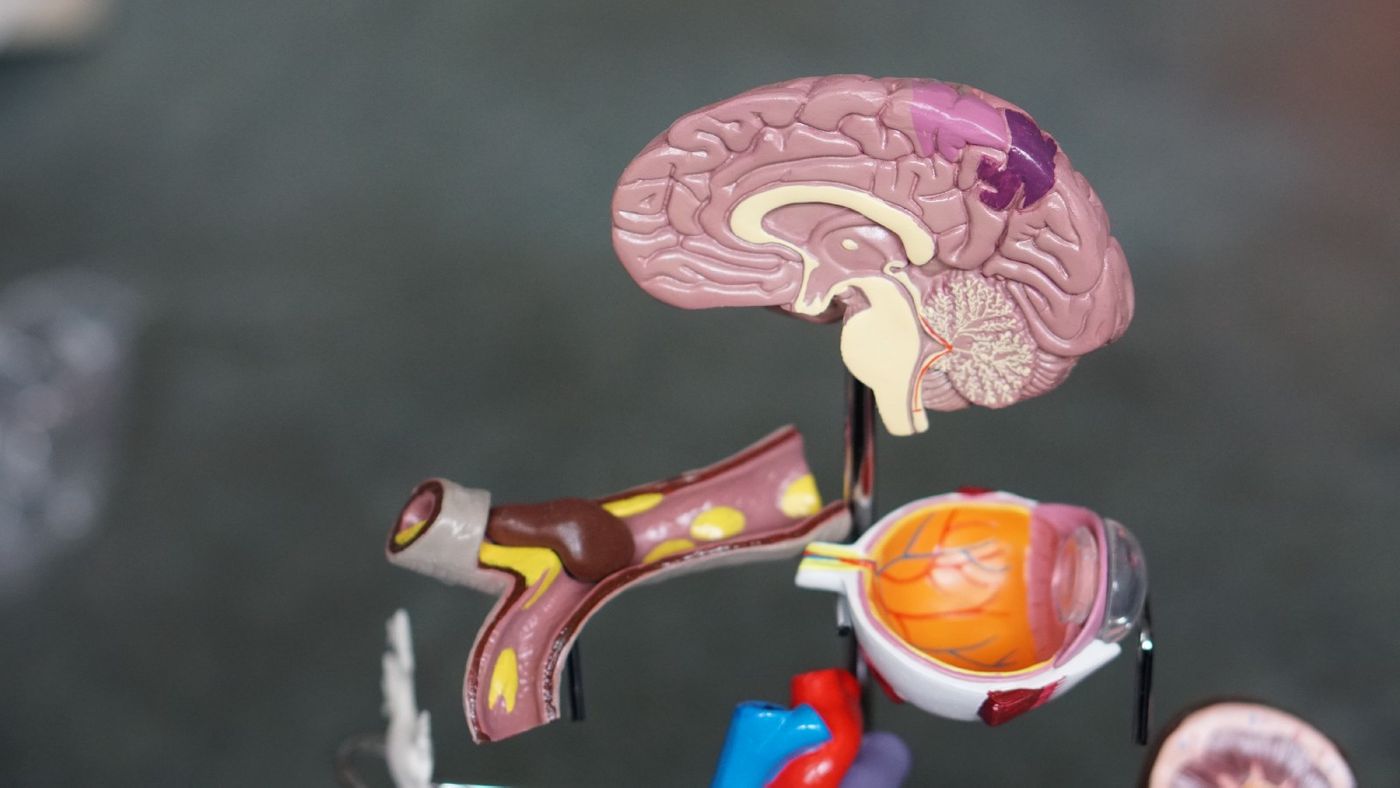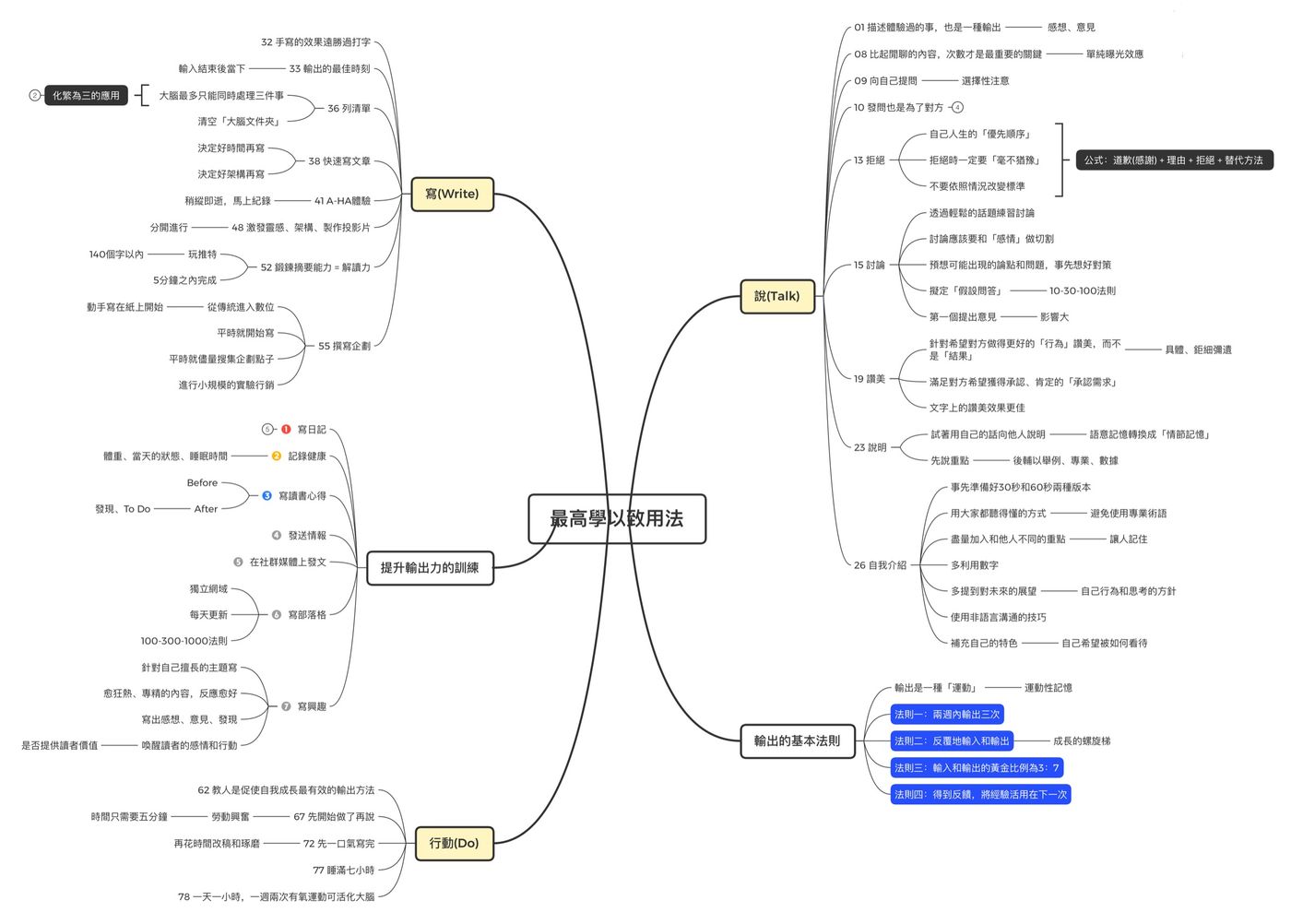
https://linktr.ee/penfarming 金融職人|文案編輯|雜食性閱讀者|Heptabase 愛用者 🌐 區塊鏈科普網站【鏈習生】專欄作家 🗞️ 電子報【創作者經濟IMO】主編 👤 臉書專頁【閱讀筆耕】
"Highest Learning to Use"
Author: Shion Huazawa Translator: Lai Yuting Publisher: Spring Press

book to open eyes
When I read this book, I felt like a lazy person lying on the sofa.
The area of the book is 12.8 x 18.8 cm, which is more compact than the general 14.8 x 21 cm and is easy to carry; each proposition in the book is controlled to 2~4 pages, which is convenient for fragmented reading; key words have been clearly marked in blue; chapters At the beginning, the subtitle first points out the gist in one sentence; before the end, there will be a visual review of the key points.
In short, we have done everything possible to overcome all kinds of difficulties, first blow the bowl of "soup" to cool, and then scoop it up with a spoon and deliver it to the reader.
This book talks about "output"
The "learning" in "The Supreme Learning to Use" refers to listening and reading, which are input; while "using" refers to speaking, writing, and action , which is application and output.
⚠️ Input: listen, read ⚠️ Output: speak, write, act
In this book, the author hopes to let everyone understand the importance of output , and teach specific output methods, as well as how to achieve self-growth through output; taking the three types of output methods (speaking, writing, and acting) just mentioned as the framework, bring out the 80 different units.
The author, a psychiatrist, sometimes cites neuroscience as an explanation for why this output works. The frequency of citations is not high, otherwise it will become a brain science book!
Basic rules of output

The information that is usually input to the brain is temporarily stored in the " hippocampus " of the brain for about two to four weeks. During this period, if the information is frequently used (output) , the brain will determine that the information is important and move it to the long-term memory of the " temporal lobe " for storage.
Just like the cash in the "cash register" of a supermarket, it comes and goes (for a short period of time), and only the money that is moved to the "safe deposit box" of the bank is safe (long-term).
⚠️ Rule 1" Use intelligence more than three times in two weeks, the brain will automatically turn into long-term memory

Many times, there is no result in learning, or even though you have read a lot of books, you still feel that there is no growth. The biggest reason is often "excessive input/insufficient output".
The key to growth lies in input < output . The author cited some empirical studies and suggested such a weight distribution:
⚠️ Rule 2" The golden ratio of input and output is 3 : 7

After output, before the next input, there is a " feedback " step that must not be omitted.
"Why did it succeed?"
"Why did it fail?"
"What should I do next time?"
Through a series of operations such as re-examining, exploring the reasons, introspecting, improving, correcting the direction, and adjusting the details, after thinking and sorting, it will be updated in the next input.
Continuously repeating the cycle of " input → feedback → output " is like forming a spiral ladder that spirals upwards around the axis of self-growth.
⚠️ Rule 3" Check the output results (get feedback), and use the experience in the next time ⚠️ Rule 4" The cycle of output and input - the spiral ladder of self-growth
experience
I originally thought that this book would teach a variety of damage output moves, but it wasn't. Instead, he spent more time talking about " what should be paid attention to when doing these outputs ".
Because I have read a lot of books on " communication " and " workplace work " before, and even went to Dale Carnegie Training courses, the theme also covers the practice of "speaking, writing, and acting".
So for me, most of the time I read this book is like "reviewing the past", and of course there is a "new" part; the Mind Map made this time ( click here for the original image ), excluding some individuals and taking it for granted (Otherwise, there are 80 propositions to be scattered, which is too complicated), and the subjective consciousness is strong.

I remember taking the college entrance examination in the past, everyone seized the little time left before entering the examination room (classroom), and everyone grabbed a "booklet" to make up for it.
This book is that booklet, or rather like a "dictionary". Some "vocabularies" have been fully mastered, and some are half-familiar/completely unfamiliar; all in all, the advantage is that it is easy to retrieve, there is no sequence between units, and you can drop into the "place of nostalgia" at any time.
Come find me: https://linktr.ee/penfarming
Like my work?
Don't forget to support or like, so I know you are with me..
Comment…